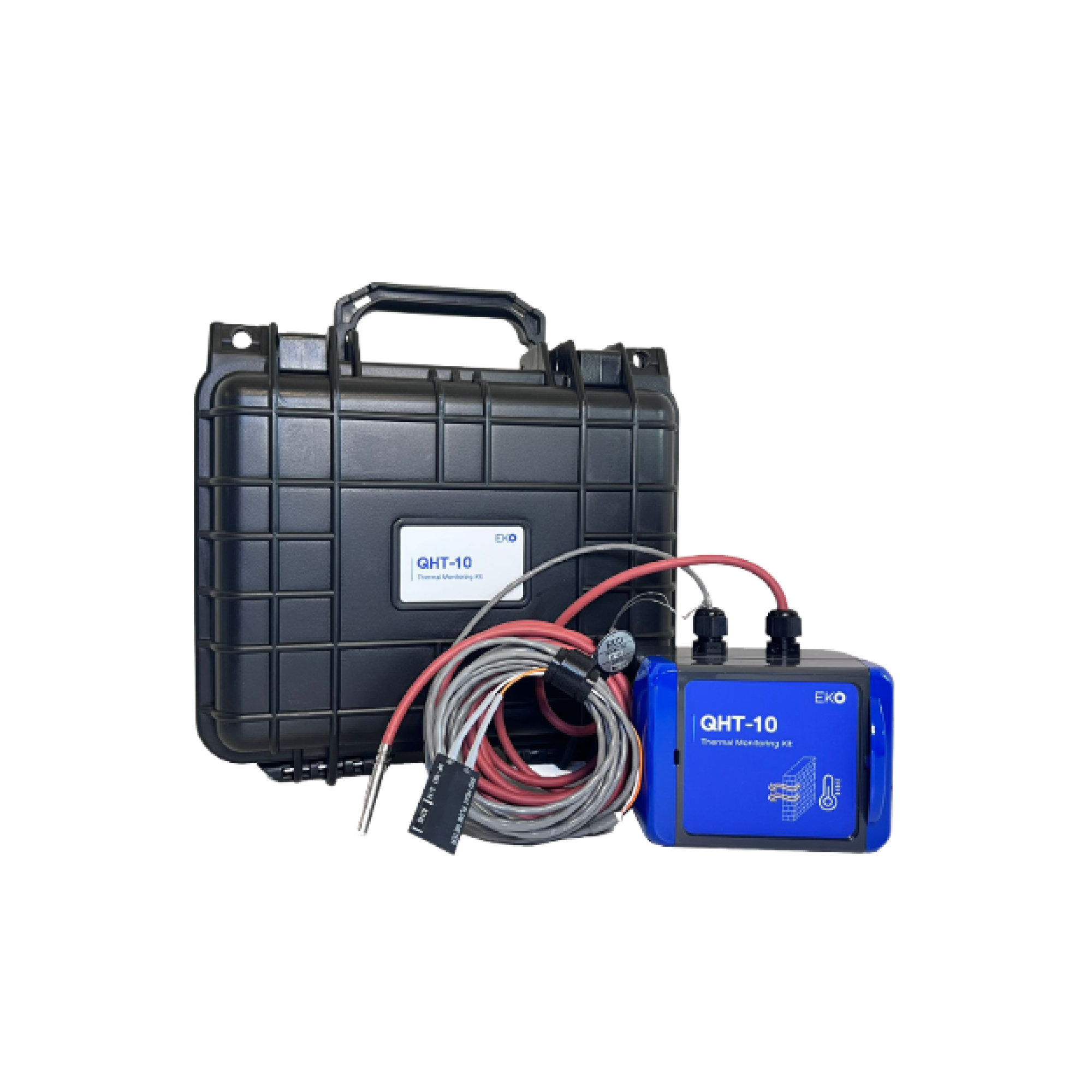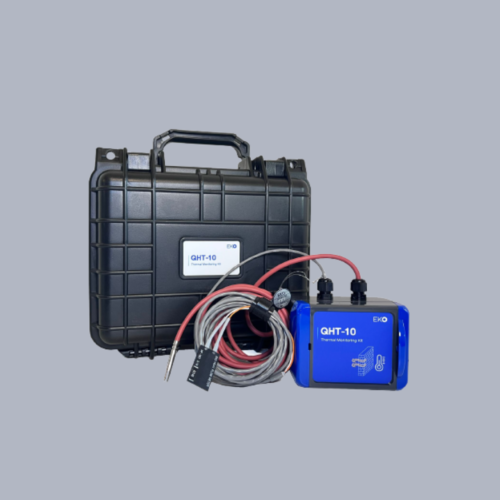QHT-10
Thermal Analysis Instruments

Thermal Monitoring Kit
The QHT-10 Thermal Monitoring Kit is a flexible heat flux and temperature monitoring solution, an ideal option for research and engineering applications as well as manufacturing control and monitoring processes.

QHT-10
The QHT-10 Thermal Monitoring Kit is a flexible heat flux and temperature monitoring solution, an ideal option for research and engineering applications as well as manufacturing control and monitoring processes.
Easy to set up and use, the QHT-10 comes housed in a weather-resistant case and is equipped with a long-life battery and an ultra-high-resolution data logger that can store up to 4 million data points.
Including thin and sensitive HF-01S Heat Flux Sensors and highly accurate 4-wire RTD Temperature Sensors, the QHT-10 comes in three configurations; the dual ‘Heat Flux’ model ‘HH’, the dual temperature model ‘TT’ and the mixed model ‘HT’.
Key Features:
- Pre-configured, quick set up & ready to go
- Tough carry case & Weather resistant housing
- Ultrahigh resolution data logger
Resources
Accessories
Frequently Paired Together
| Number of measurement points | 2 |
|---|---|
| Logger Operating temperature range | -40 to +90°C |
| Data storage | 4 Million Data points |
| Datalogger battery life | Interval: >1min : 4 years – 10s : 230 days |
| Battery type of the data logger | Lithium type SL-750/S |
| Interface | USB to PC |
| Software | InfraLog 5 |
| Measurement unit IP level | IP66, IP68 |
| Transport case IP level | IP67 |
| Weight (Measurement unit) | 0.335 kg |
| Weight (incl Transport case) | 1.55 kg |
| Dimensions (Measurement Unit) | 113 x 80 x 60 mm |
| Dimensions (Transport case) | 270 x 240 x 120 mm |
| Sensor specifications : | |
| Heat flux sensor nominal sensitivity | 55 μV/W/m² |
| Heat flux range | ±10000 W/m² |
| Heat flux sensor temperature range | -30 to 100°C |
| Temperature Sensor type | PT-1000, 4-wire (Models HT and TT) |
| Temperature sensor accuracy | 1/10 DIN class |
| Temperature Sensor Range | -60 to 180°C |
| Sensor Cable Length | 3 m |

